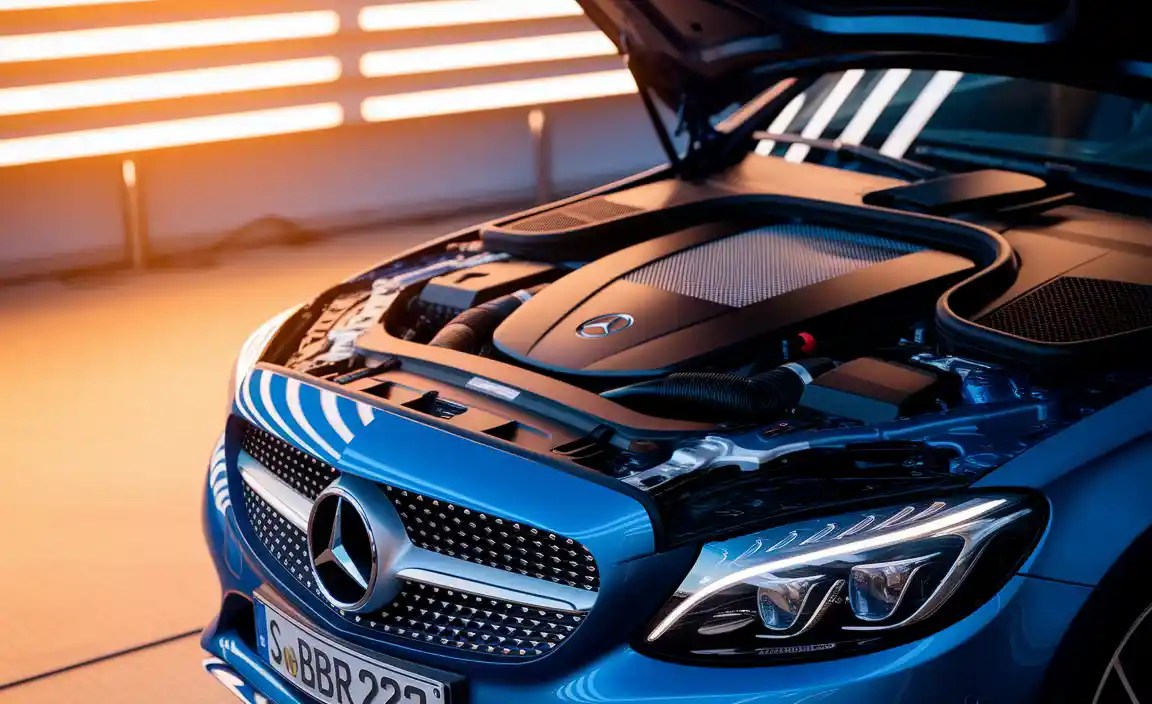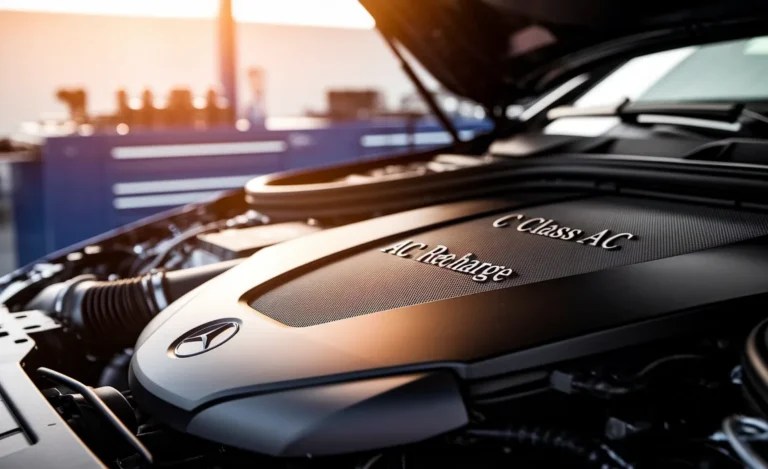Mercedes-Benz C Class Coolant Flush: Ultimate Affordable Solution
For a C-Class coolant flush, an affordable DIY solution is entirely achievable. By following a structured process, using the right materials, and taking necessary precautions, you can effectively maintain your Mercedes-Benz’s cooling system, preventing costly repairs and ensuring optimal engine performance.
Your Mercedes-Benz C-Class is a marvel of engineering, a sophisticated machine built for performance and comfort. To keep it running smoothly, especially through the rigors of varying weather conditions, maintaining its cooling system is paramount. A C-Class coolant flush might sound daunting, but it’s a vital maintenance task that, when done yourself, offers significant savings without compromising quality.
Neglecting it can lead to overheating, corrosion, and expensive damage. This guide will walk you through the entire process, breaking down each step into manageable actions, making it accessible even for the novice car owner.

Your Mercedes C-Class Cooling System: A Quick Overview
Understanding how your C-Class’s cooling system works is the first step toward effective maintenance. The primary goal of this system is to regulate the engine’s temperature, preventing it from overheating or getting too cold. It achieves this through a carefully orchestrated circulation of coolant.
Radiator: This is where heat is dissipated. As hot coolant flows through its fins, air passing over them cools it down.
Water Pump: This component circulates the coolant throughout the engine and back to the radiator.
Thermostat: This valve controls the flow of coolant. It remains closed when the engine is cold, allowing it to warm up quickly, and opens when the engine reaches its optimal operating temperature.
Coolant Reservoir (Expansion Tank): This holds excess coolant and allows for expansion and contraction as the temperature changes.
Hoses: These flexible tubes transport coolant between the engine, radiator, and heater core.
The coolant itself is a mixture of antifreeze and distilled water. It not only prevents freezing in cold weather and boiling in hot weather but also contains crucial additives that protect the system’s metal components from corrosion and scale buildup. Over time, these additives degrade, and the coolant can become contaminated, necessitating a flush and refill.
Why Perform a C Class Coolant Flush?
Regular maintenance is the cornerstone of luxury car ownership, and for your C-Class, a coolant flush is a non-negotiable. It’s not just about topping up fluids; it’s a restorative process.

Preventing Overheating: Old coolant loses its ability to transfer heat effectively. Over time, it can become degraded and sludgy, impeding its flow and reducing the radiator’s efficiency. This can lead to your engine overheating, especially during demanding conditions or hot weather.
Stopping Corrosion: The additives in coolant protect your engine’s metal components from rust and corrosion. As these additives deplete, corrosion can begin, damaging vital parts of the cooling system like the radiator, water pump, and engine block.
Maintaining Optimal Engine Performance: An engine operating at its correct temperature performs more efficiently, leading to better fuel economy and a smoother driving experience. Overheating can force the engine to work harder, diminishing performance.
Avoiding Costly Repairs: Ignoring the cooling system is a common gateway to severe engine damage. A blown head gasket, a failed water pump, or a clogged radiator are all expensive repairs that can often be avoided with proactive coolant maintenance.
Saving Money: While a dealership coolant flush can be pricey, performing this service yourself drastically reduces the cost to just the price of the coolant, distilled water, and a few basic tools.
What You’ll Need: Essential Tools and Materials
Performing a C-Class coolant flush at home is remarkably straightforward with the right preparation. Here’s a list of everything you’ll need to gather before you begin:
Tools:
Safety Glasses: Essential for protecting your eyes from corrosive coolant.
Gloves: Nitrile or latex gloves will protect your skin from contact with the coolant.
Drain Pan: A large capacity pan (at least 5 quarts) to catch the old coolant.
Socket Set/Wrenches: To remove any protective undertrays or drain plugs.
Pliers: For securing hose clamps.
Funnel: A clean funnel for adding the new coolant.
Bucket: For rinsing the system if doing a flush and fill.
Shop Towels or Rags: For cleaning up spills.
Jack and Jack Stands (Optional but recommended): To safely elevate the front of the vehicle for easier access to the radiator drain plug. Consult your owner’s manual for the correct jacking points.
Torque Wrench: If re-tightening drain plugs or components.
Materials:
Mercedes-Benz Approved Coolant (Antifreeze): It is crucial to use the specific coolant recommended by Mercedes-Benz for your C-Class model. Using the wrong type can cause severe damage. Check your owner’s manual or a reputable Mercedes-Benz parts supplier for the correct specification (often a blue or pink concentrated fluid, or sometimes a pre-diluted mix). A common specification to look for is MB 325.0 or MB 326.0.
Distilled Water: Never use tap water, as its mineral content can cause corrosion and damage to your cooling system. You’ll need approximately 50% of the total coolant capacity for mixing with concentrate.
Cooling System Flush Additive (Optional but Recommended): For a thorough clean, a dedicated cooling system cleaner can remove existing sludge and deposits.
Estimating Coolant Capacity:
The amount of coolant needed will vary depending on your C-Class model year and engine. A general guideline for most C-Class models is between 7.5 to 9.5 liters (approximately 2 to 2.5 gallons). Always consult your owner’s manual for the precise capacity. You’ll typically need a 50/50 mix of coolant concentrate and distilled water, so if your capacity is 8 liters, you’ll need 4 liters of concentrate and 4 liters of distilled water.
Step-by-Step Guide: Performing Your C Class Coolant Flush
This comprehensive guide will take you through the process of flushing and refilling your Mercedes-Benz C-Class cooling system. Safety is paramount, so always wear your safety glasses and gloves.

Step 1: Prepare the Vehicle and Engine
Park on a Level Surface: Ensure your vehicle is on a flat, stable surface.
Allow Engine to Cool Completely: This is critical for safety. Never attempt to drain hot coolant. Hot coolant is under pressure and can cause severe burns. Wait at least 2-3 hours after driving or until the engine is cool to the touch.
Locate Components: Identify the coolant reservoir, radiator, and any drain plugs. Many C-Class models have an undertray that might need to be removed for access to the radiator drain plug. Refer to your owner’s manual or a repair guide for specific locations for your model.
Safely Elevate the Vehicle (Optional but Recommended): If you need better access to the radiator drain plug, use a jack to lift the front of the car and secure it with jack stands at the manufacturer-recommended points. Never rely solely on the jack.
Step 2: Drain the Old Coolant
Open the Coolant Reservoir Cap: Slowly loosen and remove the cap from the coolant reservoir. This will allow air to enter and the coolant to drain more freely. Be prepared for a small rush of air.
Position the Drain Pan: Place your large drain pan directly underneath the radiator drain plug. This plug is usually located at the bottom of the radiator. Some radiators have a petcock valve, while others have a threaded plug.
Open the Drain Plug: Carefully loosen the drain plug using the appropriate wrench or socket. If it’s a petcock, you might be able to turn it by hand or with pliers. If it’s a threaded plug, be ready for the coolant to start flowing as soon as it’s loose.
Drain Completely: Allow all the old coolant to drain into the pan. This may take several minutes. While it’s draining, you can proceed to the next optional step.
Step 3: Flush the Cooling System (Optional but Recommended)
For a truly clean system, a flush is recommended.
Reinstall or Close the Drain Plug: Once the old coolant has drained, securely re-install the radiator drain plug or close the petcock. Ensure it’s tight but do not overtighten.
Fill with Distilled Water: Using your funnel, fill the coolant reservoir with plain distilled water.
Start the Engine: Replace the coolant reservoir cap. Start the engine and let it run for about 10-15 minutes. Turn the heater on high (this opens the heater core into the circulation loop). This circulates the distilled water throughout the system, flushing out residual old coolant and any loose debris.
Drain the Distilled Water: Once the engine has run, turn it off and allow it to cool completely again. Then, repeat Step 2 to drain the now-dirty distilled water. You might need to repeat this distilled water flush process 1-2 more times until the drained water runs mostly clear.
Special Note on Mercedes-Benz Coolant Types:
Mercedes-Benz uses specific coolant formulations, often identified by color (e.g., blue, pink, or green). It’s imperative to use the exact type specified in your C-Class owner’s manual, often denoted by MB specifications like MB 325.0 or MB 326.0. Mixing incompatible coolants can lead to gelling, corrosion, and blockages, causing severe damage. When in doubt, consult your owner’s manual or a Mercedes-Benz dealership.
Step 4: Refill the Cooling System
Ensure Drain Plug is Secure: Double-check that the radiator drain plug is properly installed and tightened.
Prepare the New Coolant Mixture: If you purchased concentrated coolant, you’ll need to mix it with distilled water. The standard ratio is 50/50. For example, if your system capacity is 8 liters and you buy 4 liters of concentrate, you’ll add 4 liters of distilled water to it in a separate clean container. Stir gently. Pre-diluted coolant mixtures can be used directly.
Fill the System: Using your clean funnel, slowly pour the new coolant mixture into the coolant reservoir. Fill it up to the “MAX” or “FULL” line.
Bleed the Cooling System: This is a crucial step to remove air pockets that can cause overheating.
With the reservoir cap off, start the engine.
Set the cabin heater to its highest temperature and fan speed. This ensures the heater core is open and allows air to escape from that circuit.
Let the engine idle. You’ll see bubbles coming out of the reservoir as air is purged.
As the engine warms up and the thermostat opens, the coolant level in the reservoir may drop. Continue to add coolant to maintain the level at or slightly above the MAX line.
Squeeze the upper radiator hose gently; this can help dislodge any trapped air.
Continue this process for about 15-20 minutes, or until no more bubbles are appearing and the engine reaches normal operating temperature (the thermostat should have opened, and the cooling fan may cycle on and off).
Top Off and Cap: Once the system is bled, top off the reservoir to the MAX line and securely re-install the coolant reservoir cap.
Step 5: Final Checks and Cleanup
Lower the Vehicle: If you elevated the car, carefully lower it back down to the ground.
Inspect for Leaks: Thoroughly check all hoses, the radiator, and the drain plug for any signs of leaks.
Start the Engine Again: Let the engine run for a few more minutes and monitor the temperature gauge. Ensure it stays within the normal operating range. Check the coolant level in the reservoir one last time after the engine has cooled down completely. It should still be at or near the MAX line.
Dispose of Old Coolant Properly: Never pour old coolant down a drain or onto the ground. It is toxic and environmentally harmful. Contact your local hazardous waste disposal facility or auto parts store for proper disposal options. Many auto parts stores accept used fluids for recycling. You can also find guidance on recycling antifreeze from the EPA.
Clean Up: Wipe down any spilled coolant from your tools and the engine bay.
What to Do If Air Remains in the System
If your C-Class’s temperature gauge consistently reads higher than normal after the flush, or if you notice inconsistent heating from the cabin vents, you likely still have air trapped in the cooling system.

Re-Bleed the System: Repeat the bleeding process (Step 4). Sometimes, a second or even third attempt is necessary.
Check for Leaks: Air can enter the system through leaks, especially at hose connections or the reservoir cap. Inspect all potential weak points carefully.
Consult a Professional: If you continue to have trouble, it might be time to seek assistance from a qualified Mercedes-Benz technician. They have specialized tools that can help effectively purge stubborn air pockets.
C Class Coolant Flush: Cost Comparison
A DIY C-Class coolant flush is significantly more affordable than professional service. Let’s break down the potential costs:
| Service Type | Estimated Cost Range (USD) | Notes |
| :—————– | :————————- | :———————————————————————– |
| DIY Coolant Flush | $50 – $100 | Includes coolant, distilled water, and potentially a bottle of flush additive. |
| Dealership Service | $200 – $400+ | Labor costs and dealership markup are significant. |
| Independent Shop | $150 – $300 | Generally less expensive than a dealership but still a professional charge. |
Savings: By performing the service yourself, you can save anywhere from $100 to $350 or more per service. Considering a coolant flush is typically recommended every 2-4 years or at specific mileage intervals (check your owner’s manual), these savings add up over the life of your vehicle.
Common Pitfalls to Avoid
While the process is manageable, there are a few common mistakes DIYers make that can lead to problems:
Using the Wrong Coolant: This is the most critical error. Always use the Mercedes-Benz approved coolant specified for your C-Class. The wrong type can cause corrosion or gel, leading to expensive repairs.
Not Letting the Engine Cool Down: Draining hot coolant is dangerous. Always wait until the engine is completely cool.
Using Tap Water: Tap water contains minerals that can cause scale buildup and corrosion in your cooling system. Always use distilled water.
Improper Bleeding: Air pockets are a major cause of overheating after a coolant service. Ensure you follow the bleeding procedure carefully.
Not Disposing of Old Coolant Properly: Antifreeze is toxic. It must be disposed of responsibly at a designated hazardous waste facility.
Overtightening Drain Plugs: Radiator drain plugs and petcocks can be made of plastic or softer metals, and overtightening can strip threads or crack components.
How Often Should a C Class Coolant Flush Be Performed?
The recommended interval for a C-Class coolant flush varies by model year and the specific coolant used. However, a general guideline is:

Newer Models (using modern long-life coolants, often pink or blue): Typically every 4-5 years or around 60,000 miles, whichever comes first.
Older Models (using conventional coolants): May require flushing and refilling as often as every 2 years or 30,000 miles.
Always consult your Mercedes-Benz C-Class owner’s manual for the precise maintenance schedule recommended by the manufacturer for your specific vehicle. Many owners find it beneficial to perform this service proactively sooner rather than later, especially if they are unsure of the coolant’s history or if the vehicle is used in extreme climates.
Frequently Asked Questions (FAQ)
Q1: How do I know if my C-Class needs a coolant flush?
A1: Signs include a coolant warning light on the dashboard, the engine running hotter than usual, rust-colored coolant, or a sludgy appearance in the reservoir. If it’s been over 3-4 years or you don’t know the coolant’s history, it’s a good time to consider a flush.
Q2: Can I mix different types of Mercedes-Benz coolant?
A2: No. You should never mix different coolant types or brands, even if they are both Mercedes-Benz approved, unless the manufacturer specifies they are compatible. Mixing can cause chemical reactions that degrade the coolant and damage the system. Stick to the specific type recommended for your C-Class.
Q3: What happens if I don’t flush my coolant?
A3: Over time, coolant breaks down, loses its anti-corrosive properties, and can become contaminated. This can lead to engine overheating, corrosion and damage to internal engine components, radiators, water pumps, and heater cores, all of which are expensive to repair.
Q4: Is it safe to do a coolant flush if I have a leak?
A4: You should address any coolant leaks before performing a flush. A flush can sometimes exacerbate existing small leaks due to changes in system pressure. Once the leaks are repaired, a flush is ideal to replace degraded coolant.






